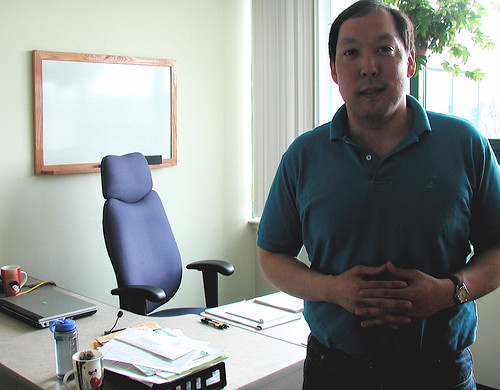Last year, Eric Nakajima, senior research manager at UMass’s Donahue Institute—one of the state’s preeminent think tanks—contributed to preparations for the visiting Urban Land Institute panel, among other tasks assembling an executive summary of briefing materials. The summary was intended to give panelists a sense of the city’s identity and well-being without having to read hundreds of pages of information. It covered recent government history; local, regional and state economic conditions; a summary of the downtown and neighborhoods; demographics; and development opportunities (about 20 major projects at the time).
Nakajima was at a breakfast forum this morning hosted by MassHousing in Boston to unveil a report released yesterday by the Donahue Institute, engaged by the Citizens’ Housing and Planning Association (CHAPA), called "The Fiscal Impact of Mixed-Income Housing Developments on Massachusetts Municipalities" (PDF). The report addresses the impact that mixed-income homeownership developments have had on municipal services over time.

Nakajima is now engaged in a study of the city’s minority-owned business economy, with results pending soon. He sat down to talk with me recently about his work, initially covering what draws him to it, and eventually coming around to what he has learned as he has considered Springfield. This is part one of a series capturing our conversation.
Eric Nakajima: I’ve lived in a few places. I grew up here in Amherst. I moved here when I was eight years old, and I’ve lived here off and on since. I’ve lived in Boston; I went to New York for a year, in DC for a year; I lived in a California for a few years.
Typically, when you escape home when you’re young, you don’t always see a place clearly for the virtues that it has. Especially if you’re interested in the world and how it works, and all these exciting things that are going on, your mind goes to Boston, our state capital; it goes to Washington, DC; it goes to exploring things. It’s when I got away, that I’d come back to this area, and I’d see things in it that I loved.
In grad school, one of the first questions asked by our environmental planning professor—a guy named Tim Duane at UC Berkeley—he asked people why they were doing what they were doing, why they were interested in environmental planning; why they were interested in studying the conflicts that arise around community revitalization and environmental preservation which, principally, were the kind of things that we were talking about in that class.
I started describing what had occurred to communities in southern Ohio—where my mother’s family is from, and where we have a family farm—when you saw the steel mills shut down, what happened to the economy there, and what happened not just to home values, but also the rise of drug abuse, and really high levels of poverty, and just seeing people like my mother’s generation move away, let alone the next one. These orphaned colonies of senior citizens there—most of them are gone now—but who I love dearly, but who passed on. If you look at what happened to the economy there, and then growing up here, looking at Holyoke, the bones of the city, watching Springfield decline—which I think is more or less is what it did, because even when I was a kid, we used to go down there and go shopping. We’d go to Johnson’s Bookstore; we’d go to Steiger’s or something like that. So Springfield, even when I was a kid, was actually a destination. You’d go either to downtown Springfield and go shopping, or you’d go out to the Eastfield Mall, or something like that, and go to Lechmere’s, or go to the JC Penney’s or Sears or something like that.
Back in the early or mid-1970s, Northampton was actually a basket case. I mean, the place was run down, there were empty storefronts, and what I saw as a kid, just growing up, was Northampton go through this process of revitalization, where it went from a community that was as run-down, to the naked eye, as Holyoke, to being a place that actually was very vibrant. If you look at the economy in Northampton now, there are actually a lot of manufacturing jobs; there are a lot of professional services; it’s very diverse, much more diverse than Amherst, in terms of its employment base and the kind of distribution of folks who are able to still live either in the community or in adjacent communities.
I became fascinated: why one community, why not another? What are the struggles that were happening in southern Ohio, where our farm is; why were those things occurring? What could be done to help people out? What could be done to understand this thing, and what role does the state or other people have in making these things become better?
Read the rest of part one of the interview here.


